DEFINITION OF TERMS:
- KEYSTONE means they are listed by National Wildlife Federation as core plants for a wildlife garden in my ecoregion (Ecoregion 8).
- NOT QUITE NATIVE means they are slightly out of range but adjacent to NYS as determined by GoBotany and NY Flora Atlas.
- Otherwise the plant is a NY-native or native to the area noted.
Goldenrod and allergies?
Our goldenrods
KEYSTONE: Wreath goldenrod (Solidago caesia)
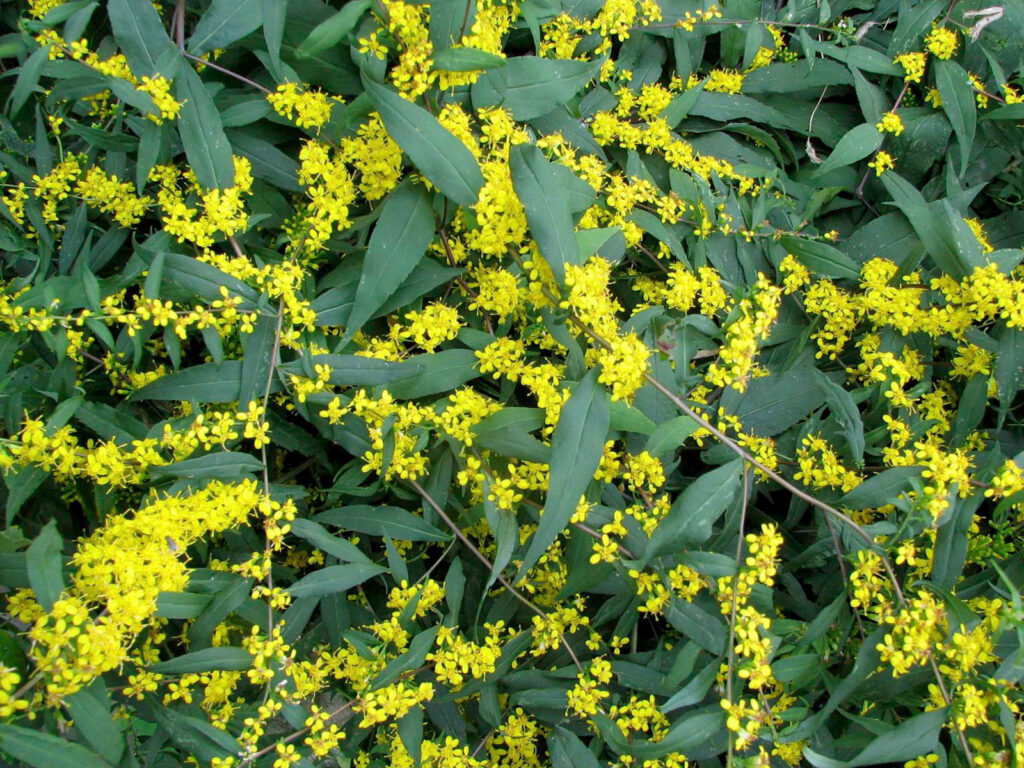
This is a good goldenrod for a shady area. It spreads out horizontally , so it seems much lower-growing than most goldenrods. It spreads some, but not aggressively. Like other goldenrods, it provides much-needed nectar in the fall — as well as a glow to our shady woodland area. It’s growing along with some snakeroot (Eupatorium rugosum) and the combination of pure gold and pure white is very appealing.
Wildlife: Butterflies, birds
** SPECIAL VALUE TO NATIVE BEES **
** Attracts predatory or parasitoid insects that prey upon pest insects **
- Learn more:
- Wildflower Center: Wreath goldenrod
KEYSTONE: Canada goldenrod (Solidago canadensis)
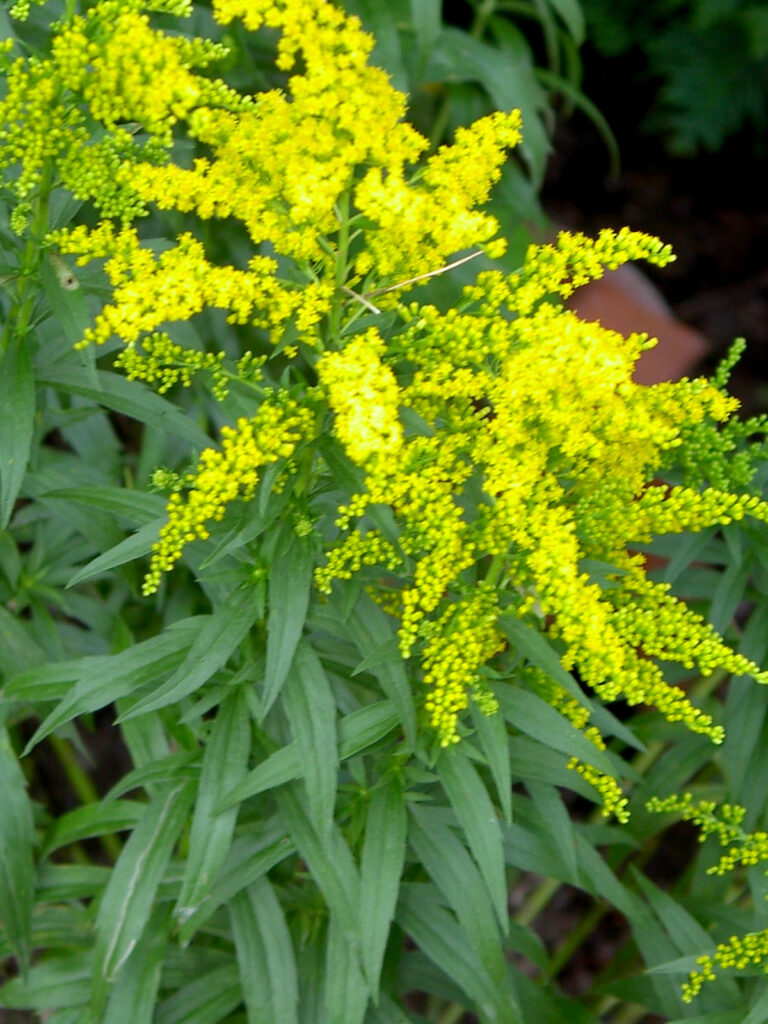
This is what everyone thinks of when they think of goldenrod. It fills the fields in the fall, along with the purple New England asters.
This isn’t a plant I deliberately planted, but it is attractive and provides much-needed nectar in the fall. It’s not as easy to have in a garden, though, since it spreads underground, unlike some of the other goldenrods that have equally as much nectar. I generally pull it out.
It’s an important plant in the fields, though, for the butterflies and bees that rely on it. It helps fuel the monarchs’ migration to Mexico and the loss of goldenrod-filled fields is a huge loss for the monarch.
Wildlife: Nectar for bees, butterflies; seeds for birds
** SPECIAL VALUE TO NATIVE BEES **
** Attracts predatory or parasitoid insects that prey upon pest insects **
- Learn more:
- Wildflower Center: Canada goldenrod
KEYSTONE: Zigzag goldenrod (Solidago flexicaulis)
The foliage has a sheen to it that’s very appealing. I carefully collected and deliberated planted seeds of this goldenrod. What could I have been thinking of? The seeds grew very well, but I definitely don’t need any more zigzags than those that volunteer on their own.
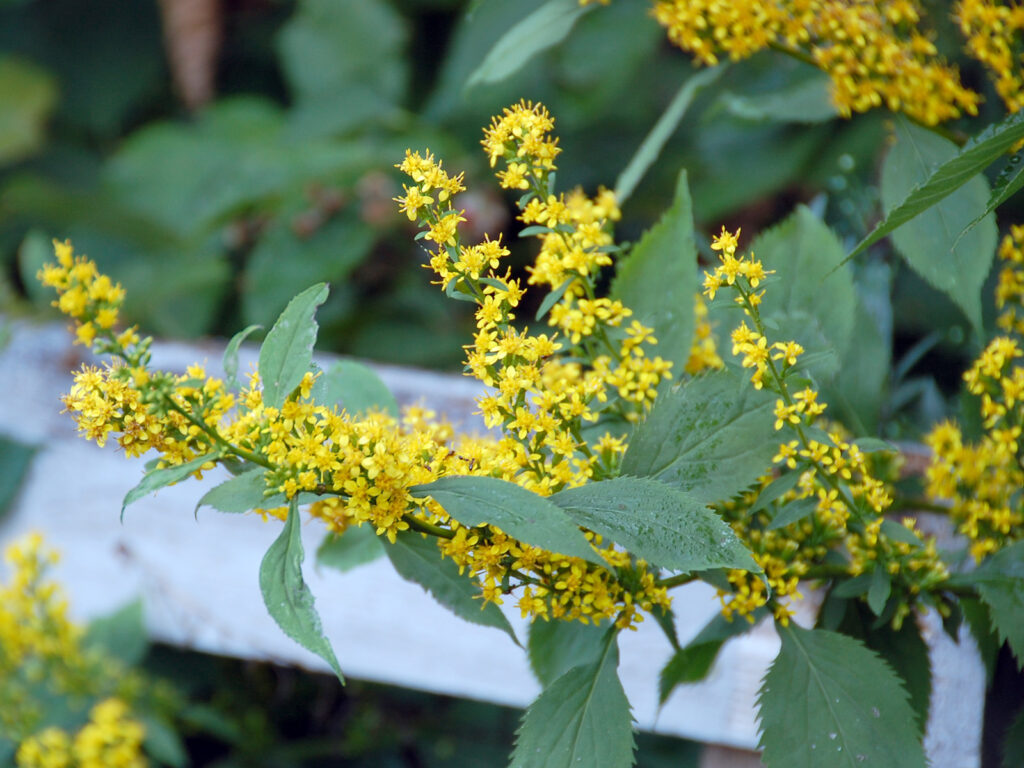

Like all goldenrods, this has a beautiful golden color. And like all goldenrods, the flowers of each species is a bit different from the others. Very attractive and easy to grow.
Wildlife: Nectar for butterflies; seeds for birds
** SPECIAL VALUE TO NATIVE BEES **
** Attracts predatory or parasitoid insects that prey upon pest insects **
- Learn more:
- Wildflower Center: Zigzag goldenrod
KEYSTONE: Roundleaf goldenrod (Solidago patula)
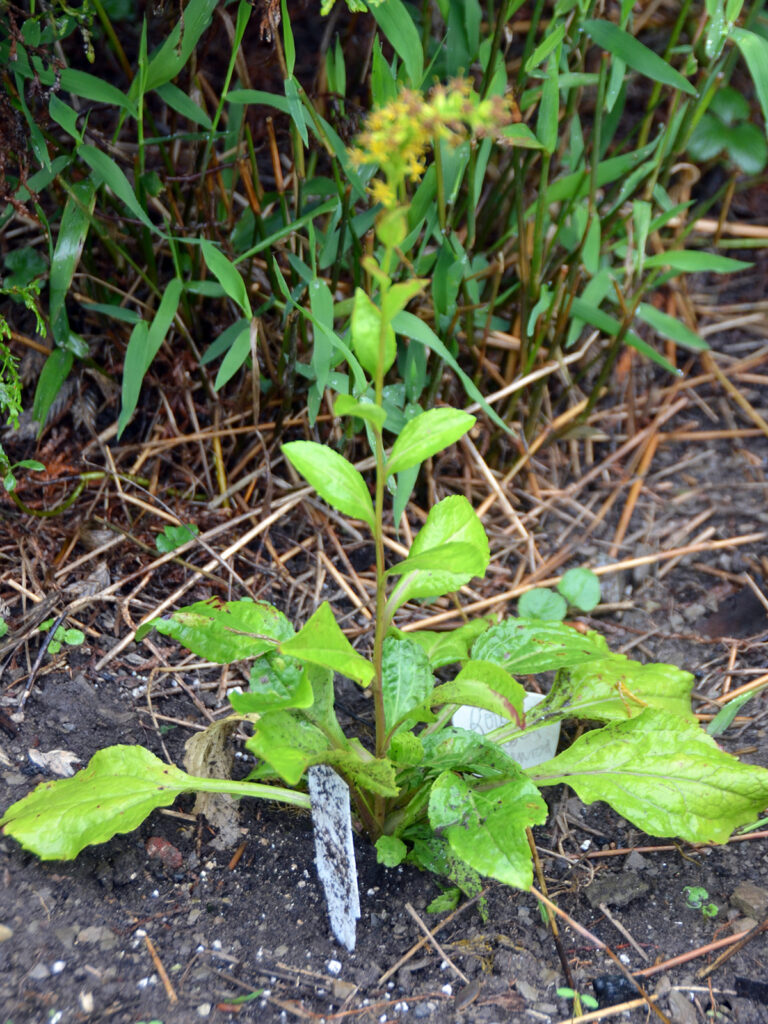
Even though I have lots of different goldenrods, I added this variety at our 2015 HGCNY Wild Ones plant sale. It has the roughest leaves of any of my plants – very interesting.
** SPECIAL VALUE TO NATIVE BEES **
** Attracts predatory or parasitoid insects that prey upon pest insects **
- Learn more:
- Wildflower Center: Roundleaf goldenrod
KEYSTONE: Stiff-leaved goldenrod (Solidago rigida)
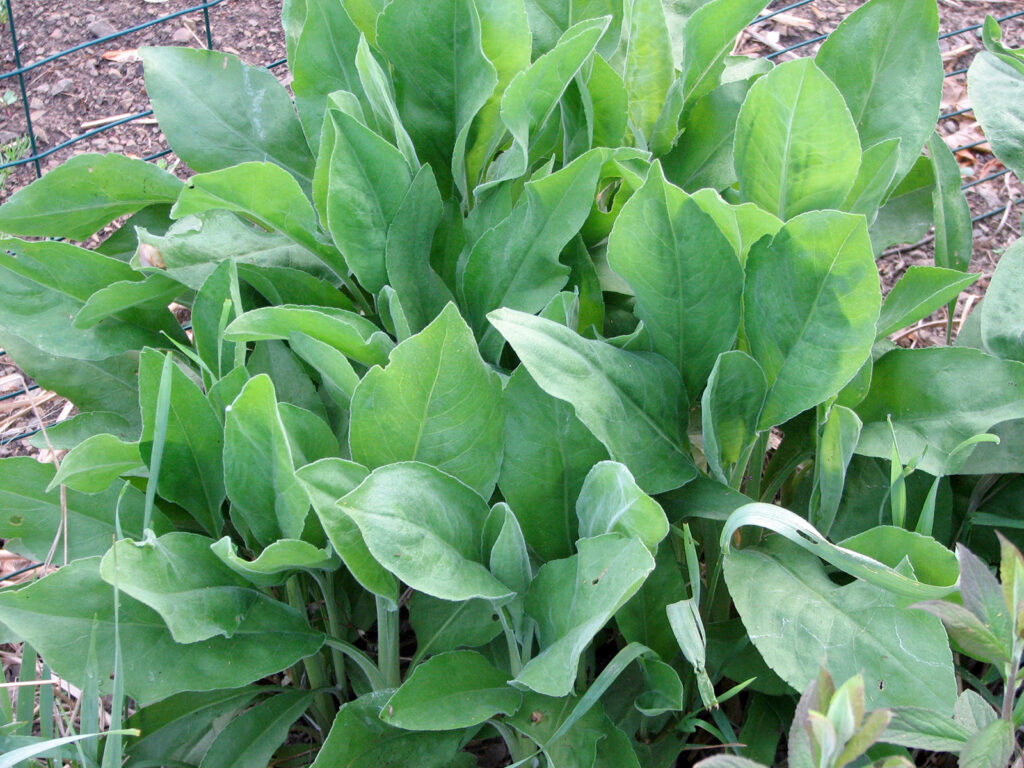
Stiff goldenrod is one of my favorite goldenrods.
I especially like its foliage. Here it is in early summer.
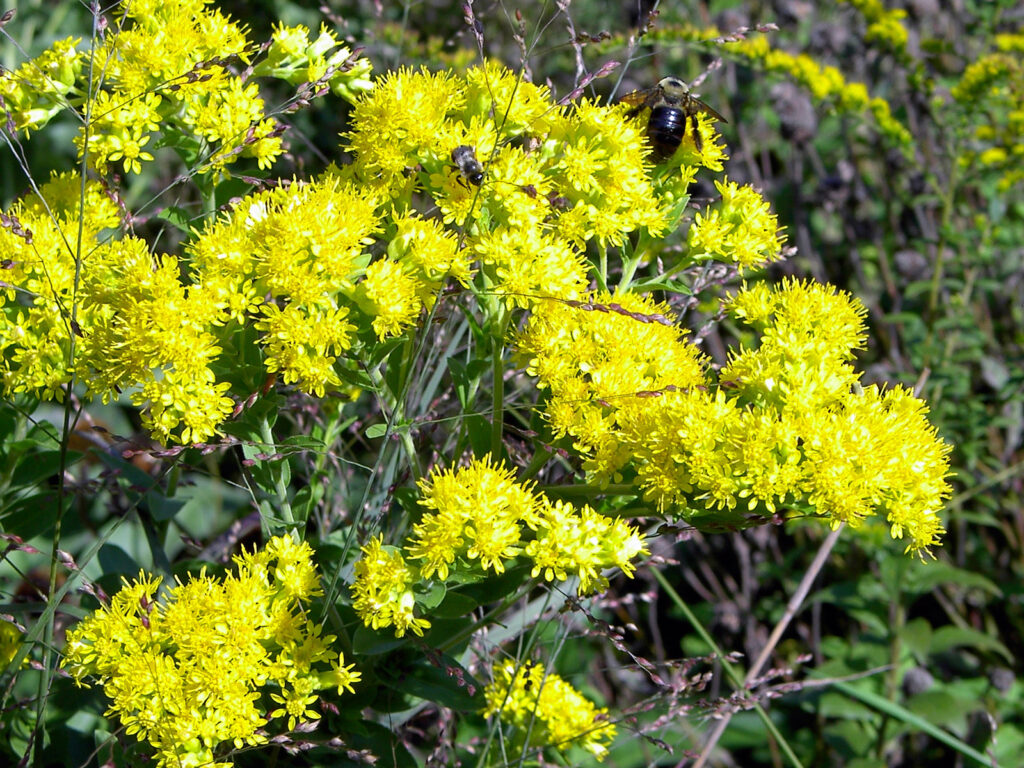
The flowers are a nice golden yellow and are abundant. It’s a rather tall plant, and I’ve been experimenting with cutting back at least some of them in June to keep them shorter and bushier.
Like all goldenrods, bees love them!
** SPECIAL VALUE TO NATIVE BEES **
** Attracts predatory or parasitoid insects that prey upon pest insects **
- Learn more:
- Wildflower Center: Stiff goldenrod
KEYSTONE: Rough-stemmed goldenrod (Solidago rugosa)
This plant makes a big splash in the fall. It really does look like fireworks, which is the name of its cultivar. It also stands upright, so it makes a nice display.
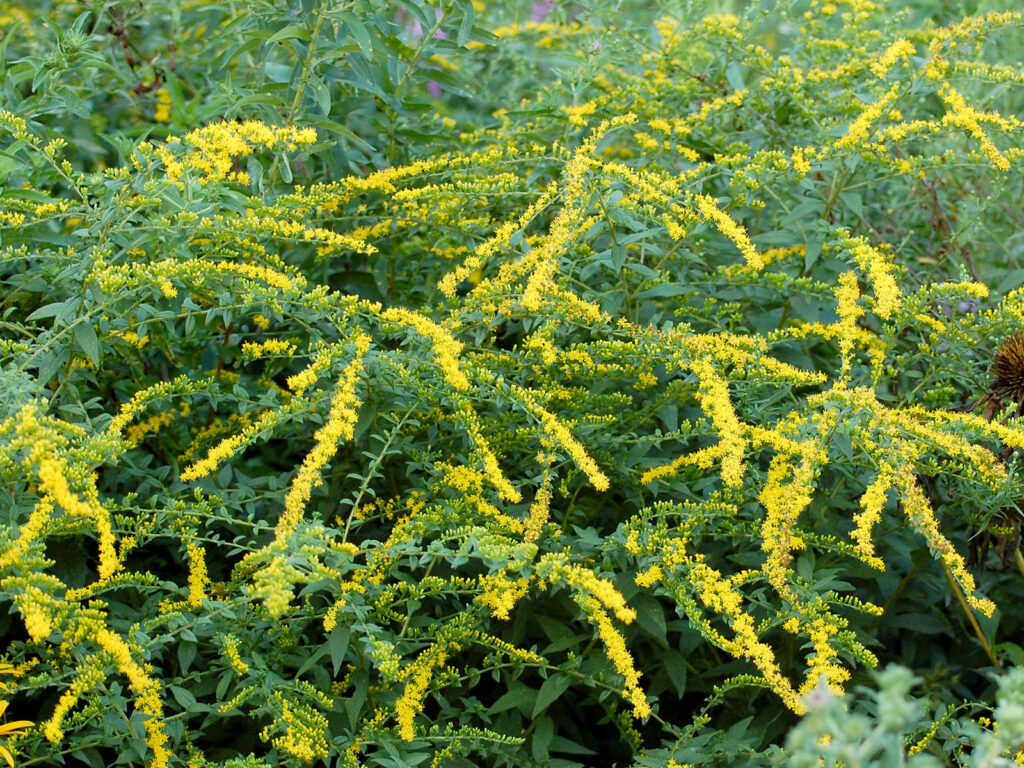
I have both the species and the cultivar. I don’t see much difference between the two, so I assume the cultivar is just a marketing tool. In the future, I’d just get the species — though once they have a cultivar to sell, most nurseries are going to sell only that.
Wildlife: Birds
** SPECIAL VALUE TO NATIVE BEES **
- Learn more:
- Wildflower Center: Rough-stemmed goldenrod
KEYSTONE: Seaside goldenrod (Solidago sempervirens)
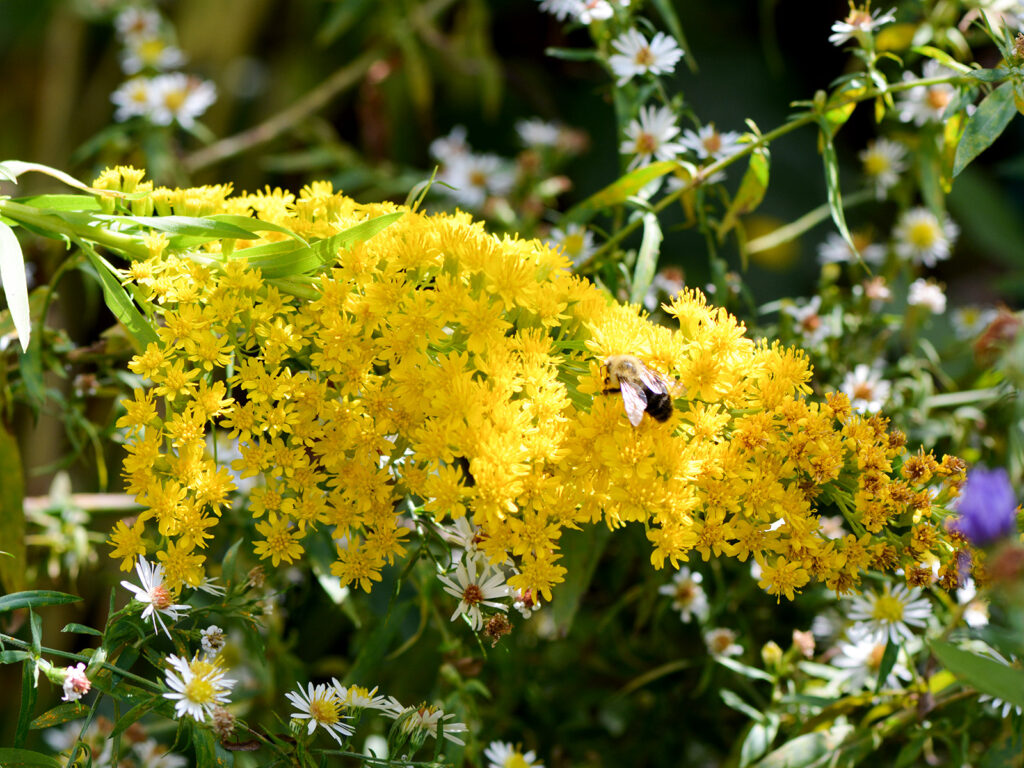
Syracuse is known as “Salt City” and actually had salt mines. Seaside goldenrod represents this heritage and was recently found growing wild by Dr. Don Leopold.
It blooms somewhat later than other goldenrods, so it extends the season of this valuable nectar plant.
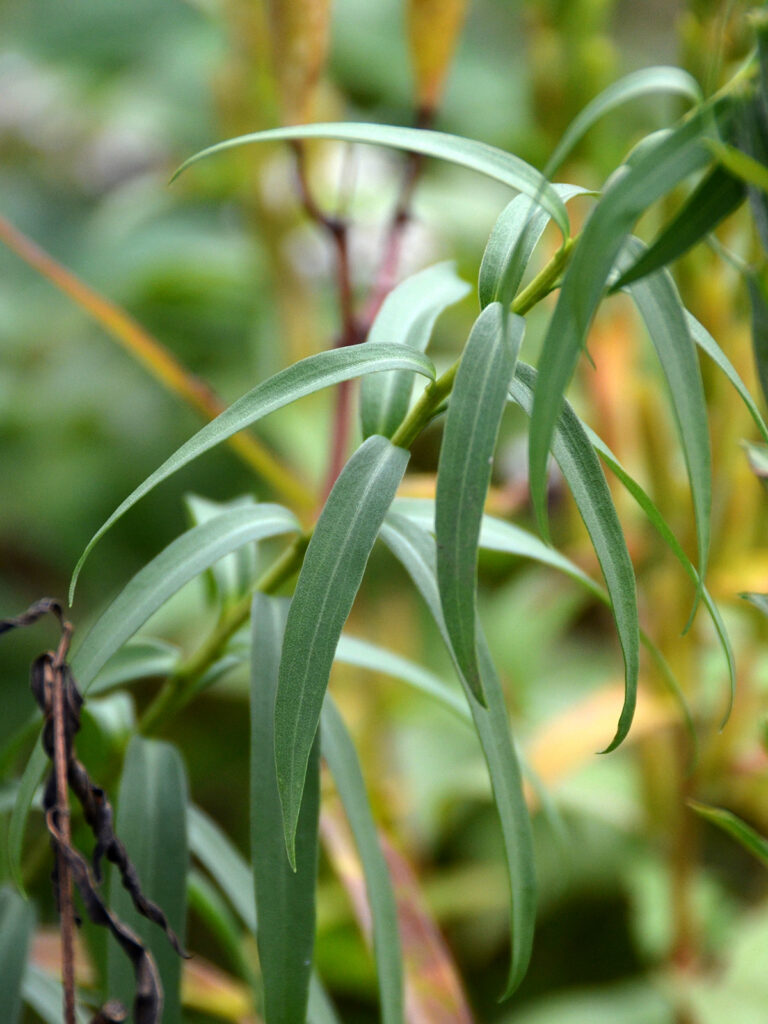
This is the foliage, thinner and smoother than some other goldenrods.
** SPECIAL VALUE TO NATIVE BEES **
** SUPPORTS CONSERVATION BIOLOGICAL CONTROL **
- Learn more:
- Wildflower Center: Seaside goldenrod
- NY Times: Seaside goldenrod – a late bloomer
MIDWEST NATIVE: Short’s goldenrod (Solidago shortii ‘Solar Cascade’)
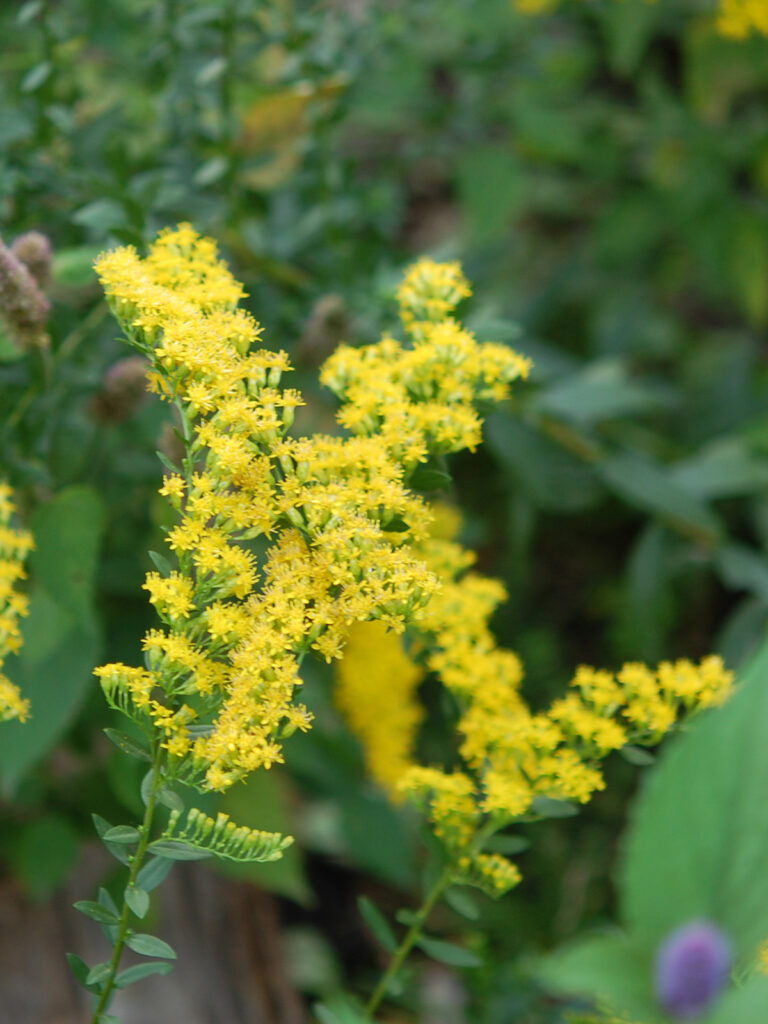
It’s known for its beautiful foliage in addition to its golden flowers. It grows quite tall and then flops over, so I’ll add it to the list of tall plants to prune back in June.
This is a cultivar of what has been called one of the rarest plants in the world and is on the Federal Endangered Plants list. There have been only three small populations discovered in Kentucky and in Indiana. This cultivar, of course, is propagated in a nursery, not collected in the wild. And unfortunately isn’t a NY-native.
- Learn more:
- Missouri Botanical Garden: Short’s goldenrod
KEYSTONE: Showy goldenrod (Solidago speciosa)
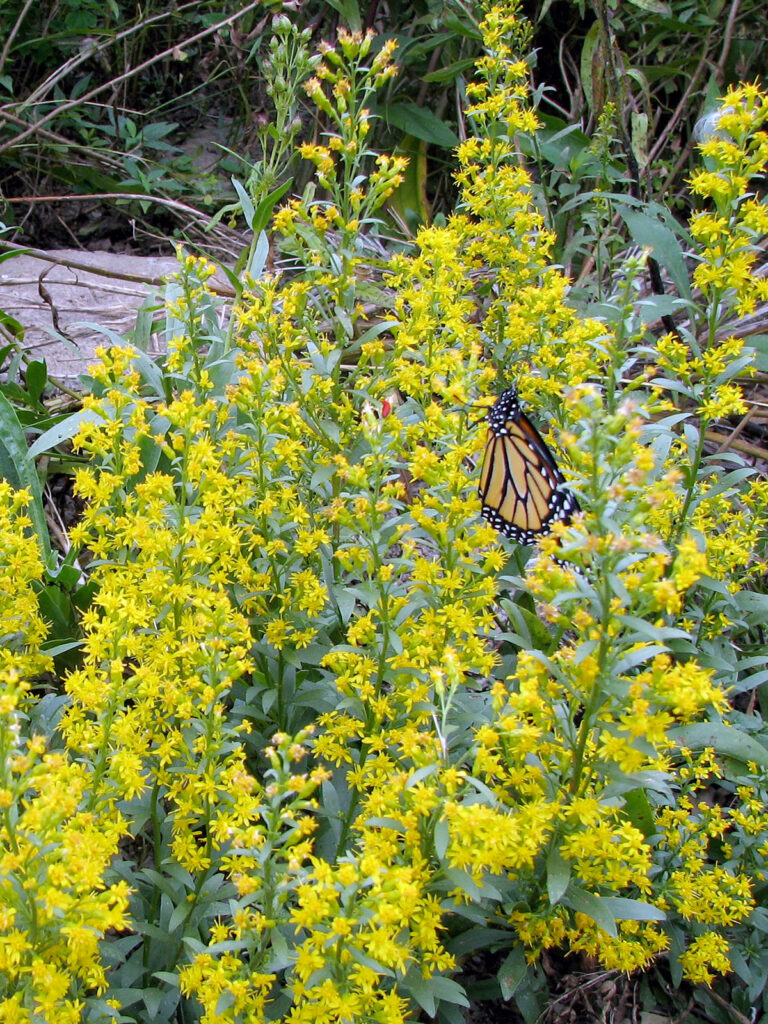
This is one of my favorite goldenrods, and it is indeed “showy.” Whereas many goldenrods spread to a fault, unfortunately, this one doesn’t seem to spread at all. If I get organized enough, I’ll try to save some seeds to grow some more.
Wildlife: Butterflies, birds
** SPECIAL VALUE TO NATIVE BEES **
- Learn more:
- Wildflower Center: Showy goldenrod
